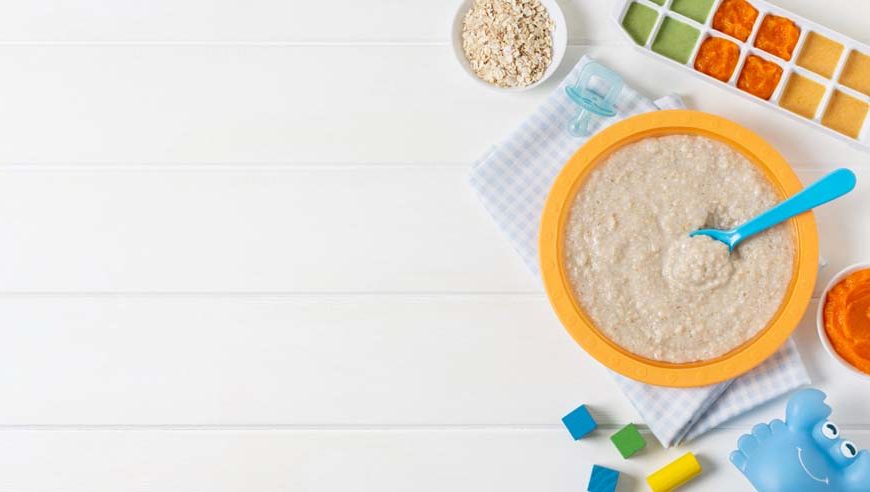In the journey of parenting, one of the significant milestones is the introduction of solid foods to a baby’s diet. Among the plethora of options available, rice cereal for infants stands out as a popular choice. This comprehensive guide aims to explore the nutritional value of rice cereal, understand when babies should start consuming it, delve into its ingredients, and provide some delightful recipes.
The Nutritional Profile of Rice Cereal
Rice cereal is often recommended as the first solid food for babies due to its smooth texture and gentle composition on the infant’s digestive system. It is typically fortified with essential nutrients like iron, which is crucial for an infant’s growth and development. Iron supports the proper functioning of red blood cells and aids in cognitive development. Additionally, rice cereal is a good source of carbohydrates, providing the necessary energy for a growing baby.
Health Benefits of Rice Cereal
Rice cereal is often the go-to choice for many parents as they begin the journey of introducing solids to their infants. Its health benefits are manifold, making it an ideal starting point for a baby’s diverse dietary exploration.
- Easy Digestibility:
- Nutrient-Rich:
- Energy Providing:
- Allergy-Friendly:
One of the primary reasons for its popularity is its easy digestibility. Infants’ digestive systems are still developing, and rice cereal offers a gentle introduction to solid foods. Its smooth texture is easy on the stomach, reducing the risk of digestive discomfort.
Rice cereal is typically fortified with essential nutrients. Iron, a critical component, is vital for an infant’s brain development and is needed to prevent iron deficiency anemia. Additionally, it often contains other nutrients like zinc, calcium, and B vitamins, which are essential for overall growth and development.
As a carbohydrate-rich food, rice cereal provides the much-needed energy for growing infants. This energy is crucial for their physical activity and developmental milestones like crawling and walking.
Rice is hypoallergenic and has a low risk of causing allergic reactions, making it suitable for most infants, including those with sensitive stomachs or allergies.
When Do Babies Start Rice Cereal?
The question of when to introduce rice cereal is pivotal. Generally, paediatricians suggest starting solids around the age of 6 months. However, this can vary depending on the individual development of the baby. Signs that indicate readiness for solid foods include the ability to sit with support, good head and neck control, and showing interest in food. It’s important to note that breast milk or formula should still be the primary source of nutrition for infants under one year.
Understanding Baby Rice Cereal Ingredients
When selecting a rice cereal for your baby, it’s essential to scrutinize the ingredients. A good quality baby rice cereal should have minimal ingredients, primarily rice and essential vitamins and minerals like iron, zinc, and calcium. Avoid cereals with added sugars or artificial flavours. Also, for babies with sensitivities or allergies, parents should look for hypoallergenic or gluten-free options.
Recipes Using Baby Rice Cereal
Incorporating rice cereal into your baby’s diet can be both nutritious and exciting. Here are a few simple recipes:
- Classic Rice Cereal:
- Fruity Rice Delight:
- Veggie Mix:
- Cereal Pancakes:
Mix rice cereal with breast milk, formula, or water to a smooth consistency. Adjust the thickness according to your baby’s preference.
Blend cooked rice cereal with pureed fruits like banana, apple, or pear for a sweet, nutritious treat.
Combine rice cereal with pureed vegetables such as sweet potato or carrot for a savoury twist.
Create a thicker mixture of rice cereal, and cook tiny pancakes on a non-stick pan. Serve them with fruit purees.
Tailoring Rice Cereal to Individual Needs
When it comes to feeding infants, one size does not fit all. Each baby is unique and may have different nutritional needs and taste preferences. Therefore, it’s important for parents to tailor rice cereal and its alternatives to suit their baby’s individual requirements.
Texture Modification:
As babies grow, their ability to handle different textures evolves. Parents can start with a very thin, watery consistency and gradually thicken the texture of the rice cereal as the baby becomes more accustomed to eating solids. This gradual transition helps in developing the baby’s chewing and swallowing skills.
Flavour Variations:
To prevent monotony and to expose babies to different flavours, rice cereal can be mixed with various fruit and vegetable purees. This not only enhances the taste but also increases the nutritional value by incorporating different vitamins and minerals found in fruits and vegetables.
Balancing Nutrition:
While rice cereal is a good source of carbohydrates and iron, it’s crucial to balance it with proteins, fats, and other essential nutrients. Introducing a variety of foods alongside rice cereal ensures a well-rounded diet.
Can Babies Be Allergic To Rice Cereal?
Although rice cereal is generally considered hypoallergenic, there are rare instances where babies might be allergic to it. Signs of an allergic reaction can include skin rashes, vomiting, diarrhoea, or a runny nose after consuming the cereal. Rice cereal also contains trace amounts of arsenic. Although the levels are typically low and considered safe, it’s advisable to serve rice cereal in moderation, alongside a varied diet.
If you suspect your baby is allergic to rice cereal, it’s crucial to consult a paediatrician. They might recommend testing and potentially suggest alternative sources of nutrition.
Rice Cereal Alternatives
For parents seeking alternatives to rice cereal, there are plenty of nutritious options available.
- Oatmeal Cereal:
- Barley Cereal:
- Multi-Grain Cereals:
- Homemade Purees:
- Quinoa Cereal:
A great alternative, oatmeal is rich in fibre and protein. It’s also known for its benefits in aiding digestion and is equally easy to prepare.
Barley is another excellent alternative, packed with vitamins and minerals. It has a slightly nutty flavour and a creamy texture, making it appealing to babies.
These cereals combine grains like barley, oats, and millet, offering a broader range of nutrients. They are ideal for older infants ready to explore more complex flavours and textures.
For those preferring whole foods, homemade purees from fruits, vegetables, or even meats can be excellent alternatives. These provide a variety of flavours and nutrients, and parents have complete control over the ingredients.
Quinoa is a protein-rich, gluten-free option. It’s a complete protein, containing all nine essential amino acids, and is also high in fibre and iron.
Incorporating rice cereal into an infant’s diet is a significant step in their developmental journey. Its ease of digestion, nutritional value, and versatility make it an excellent choice for parents. Remember, while introducing solid foods is an exciting phase, it should be done considering the baby’s readiness and nutritional needs.
At EuroKids, we understand the importance of a child’s early nutritional needs. We advocate for healthy, balanced diets that support the holistic development of infants.
















